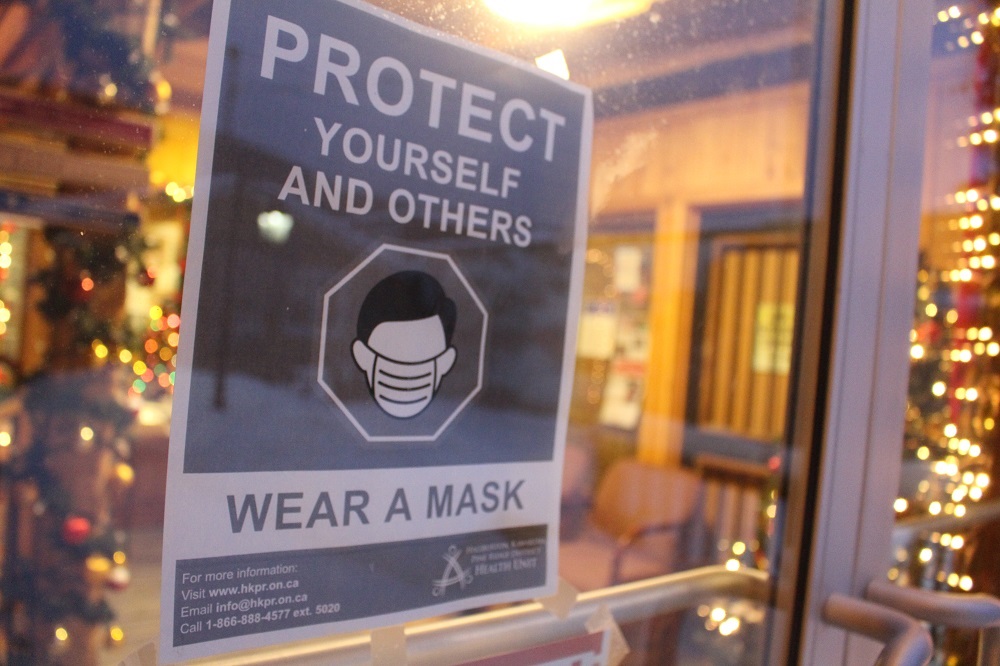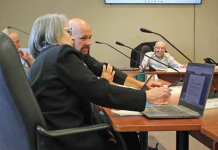Starting Feb. 17, Ontario will increase gathering limits and remove capacity limits at places where vaccination certificates are required.
On March 1, businesses won’t be obligated to check proof of vaccination certificates though mask-wearing will continue to be enforced.
“Given how well Ontario has done in the Omicron wave we are able to fast track our reopening plan,” said Premier Doug Ford in an Oct. 14 press release. “This is great news and a sign of just how far we’ve come together in our fight against the virus. While we aren’t out of the woods just yet we are moving in the right direction.”
In a Feb. 14 press conference, Ford insisted the acceleration of the reopening plan was “despite” the ongoing anti-mandate protests.
Ford and Christine Elliott, deputy premier and minister of health said declining case rates and hospitalization numbers are behind the decision.
“Thanks to the province’s high vaccination rates and the continued sacrifices of Ontarians, we are now in a position where we can move forward in our plan earlier than anticipated,” said Elliott. “With hospitalizations and ICU admissions continuing to decline, we are committed to maintaining a gradual and cautious approach to protect our hospital capacity and ensure patients can access the care they need when they need it.”
The HKPR health unit reported similarly optimistic trends in recent weeks.
“We are seeing multiple indicators that things are improving and that COVID-19 transmission is decreasing,” said chief medical officer of health Dr. Natalie Bocking.
As of Feb. 14, HKPR COVID testing, now limited to high-risk people and settings, showed a case rate of 114 cases per 100,000 people, lower than over 500 cases per 100,000 people in early January.
Rundown of reopening
Effective Feb. 17 Ontario will further ease public health measures, including, but not limited to:
• Increasing social gathering limits to 50 people indoors and 100 people outdoors.
• Increasing organized public event limits to 50 people indoors, with no limit outdoors.
Removing capacity limits in the following indoor public settings where proof of vaccination is required, including but not limited to:
• Restaurants, bars and other food or drink establishments without dance facilities.
• Non-spectator areas of sports and recreational fitness facilities, including gyms and cinemas.
• Meeting and event spaces, including conference or convention centres.
• Casinos, bingo halls and other gaming establishments. • Indoor areas of settings that choose to opt-in to proof of vaccination requirements.
• Allowing 50 per cent of the usual seating capacity at sports arenas, concerts venues and theatres.
• Increasing indoor capacity limits to 25 per cent in the remaining higher-risk settings where proof of vaccination is required, including nightclubs, restaurants where there is dancing, as well as bathhouses and sex clubs.
• Increasing capacity limits for indoor weddings, funerals or religious services, rites, or ceremonies to the number of people who can maintain two-metre physical distance. Capacity limits are removed if the location opts-in to use proof of vaccination or outdoors.
• Capacity limits in other indoor public settings, such as grocery stores, pharmacies, retail and shopping malls, will be maintained at, or increased to, the number of people who can maintain two-metre physical distance.
Effective March 1
• Capacity limits on all indoor settings are lifted. • Proof of vaccination rule will be lifted.





